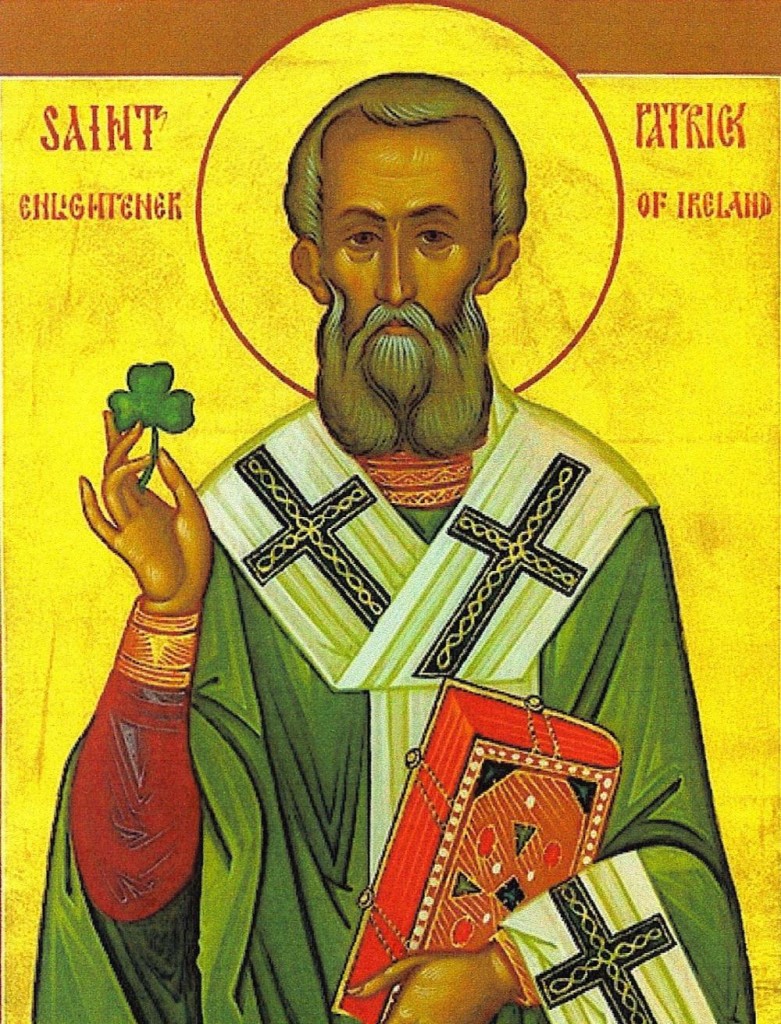
By Susan Gately - 17 March, 2014
The legend that St Patrick’s expelled snakes from Ireland only appeared in a book by a Cistercian monk, Jocelin of Furness, in the 12th century and St Patrick’s association with the shamrock came much later in the 17th century.
“The first image of Patrick holding a shamrock is on a half-penny coin which was minted in Dublin in 1674,” Salvador Ryan told CatholicIreland.net.
The Professor of Ecclesiastical History at St Patrick’s College Maynooth said many of the stories circulated about Patrick come from oral tradition, but “something would not circulate without it being depicted in iconography,” so the appearance of St Patrick holding a shamrock so late in history is “quite unusual”.
What we know from St Patrick’s own writings, his Confessions and the Letter to Coriticos, is that he was the son of a deacon, grandson of a priest and was enslaved aged 16.
He was brought to Ireland and tended herds, praying a hundred times by day, and a hundred times by night.
Patrick escaped, but back in England, in a dream he heard the voice of the Irish at a place on the western seaboard, calling “Come and walk among the Irish once again,” and he realised his life mission.
In his Confession, he refers to the conversion of hundreds of people. He is protective of the new converts, and ready to lay down his life for them.
Although Bishop Paladius had been to Ireland before Patrick, according to Professor Ryan, “Patrick brought the faith to the great bulk of Irish people in the fifth century.”
There are many stories associated with St Patrick, but according to the scholar, the “historical Patrick is more impressive than the Patrick of legend”.
Professor Ryan sees three great virtues in St Patrick: humility, perseverance and courage.
In his Confession, he is humble, speaking of being like a stone lying in deep mud, but says Christ “raised him to the top of the wall”.
He refers to his misspent youth, but does not allow it to affect the mission he is called to by Christ.
Even when he felt homesick, he persevered in his self-imposed exile. “He was committed to living and if necessary dying among the Irish people.”
The Saint’s courage was evident when he faced robbery, enslavement and the threat of martyrdom every day.
The legends that grew up around St Patrick begin to emerge in the 7th century, with Muirchú’s Life of Patrick.
At the time, lives of the saints were a particular genre of literature. Every parish had its own saint and the hagiographers vied with each other to make their saint appear more of a wonder worker.
Professor Ryan describes Muirchú as a “propagandist” for the Church of Armagh. “Armagh was expanding. He wants to claim Patrick for Armagh as a poster boy,” he explained.
Muirchú portrays the show down  between St Patrick and the High King, Laoghaire.
between St Patrick and the High King, Laoghaire.
“It is framed between pagan and Christian faith, like an old-style battle between pagan gods,” Salvador Ryan said.
When St Patrick prays, some men are physically lifted in the air according to Muirchú, and one man comes down head first, dashing his head against a rock. “It is very graphic.”
“There was a thin dividing line between religion and magic at this point in time, the emphasis was on the saint as a wonder worker.”
“It was only later on, in the 16th century, that saints were seen as exemplars.”
There were no snakes in Ireland before or after St Patrick, but “the snakes could be seen as the symbol of evil, placing the story in the context of Patrick and the early Christians driving out paganism.”